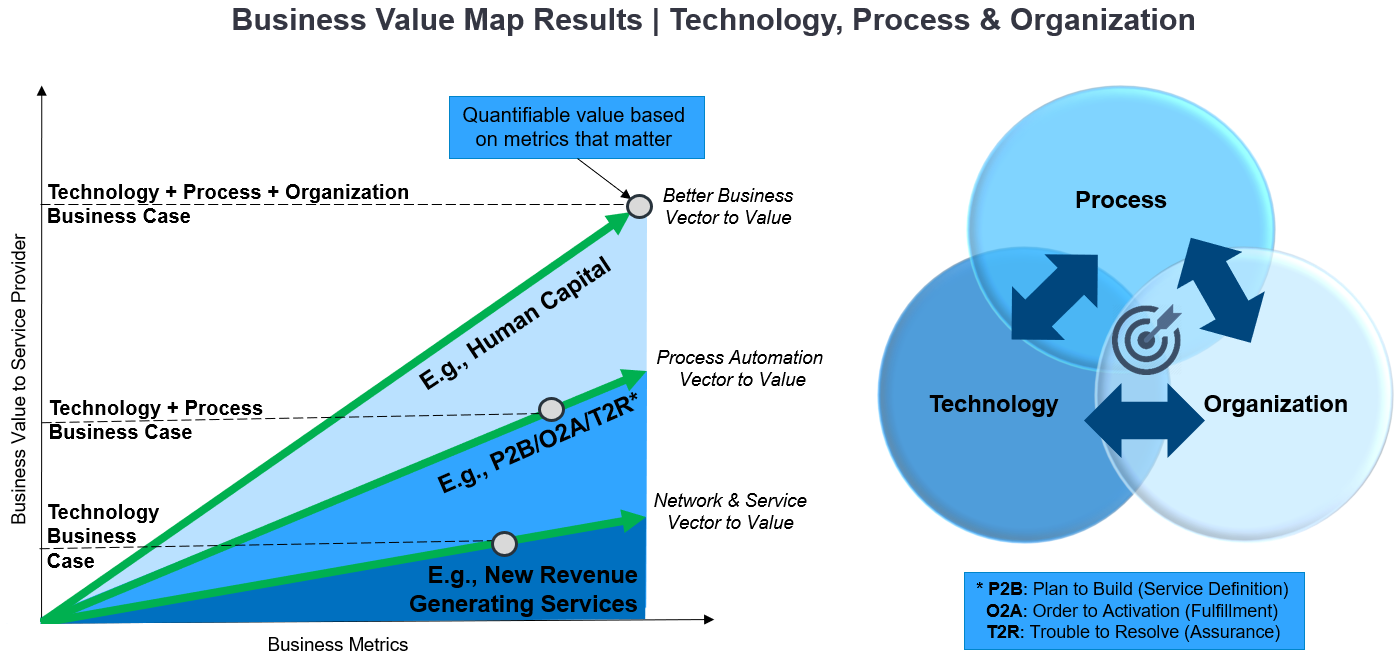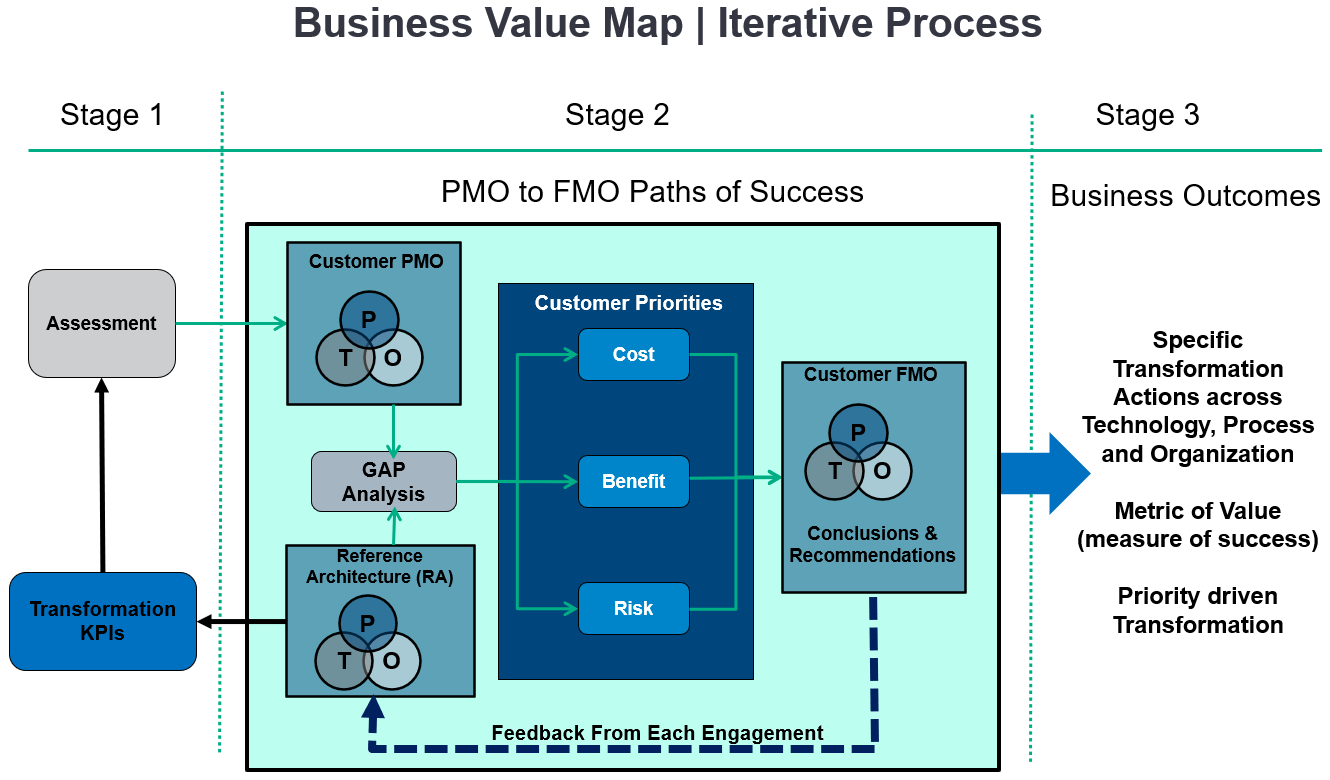Leading Digital Transformation with Business Value Mapping
 No question, digital transformation is difficult! Past studies indicate that less than 20% of digital transformation projects showed improved performance and less than 10% of those improvements were sustainable. And while new technologies (e.g., web technologies and cloud-based services) help digital transformation, technological change alone does not guarantee digital transformation success.
No question, digital transformation is difficult! Past studies indicate that less than 20% of digital transformation projects showed improved performance and less than 10% of those improvements were sustainable. And while new technologies (e.g., web technologies and cloud-based services) help digital transformation, technological change alone does not guarantee digital transformation success.
There are many examples where a new technology may enable a service provider to offer new products. But unless traditional operational processes are upgraded to align with technology and human capital is upskilled to leverage these capabilities, the full potential of new business opportunities remain elusive.
As illustrated in the figure below, it is the intersection and compounding effect of technological, process and organizational change – and quantifying their business value to the service provider – that is the sweet spot of digital transformation success going forward.

What is Business Value Mapping?
Business Value Mapping (BVM) is first about quantifying the potential impact of technological, process and organizational change in the context of a service provider’s digital transformation journey. Second, BVM allows the provider to measure and validate along the way that a given digital transformation path remains aligned with stated business objectives.
Here, quantifying change means defining a Future Mode of Operations (FMO) that, when compared to a service providers Present Mode of Operations (PMO), results in a compelling reason and business case toward digital transformation success.
It is this FMO – defining the realm of the possible – based on a holistic understanding across technological, process and organizational evolution, that has many service providers hesitant to undertake the digital transformation path they need to thrive in the industry.
Business Value Mapping has shown time and again that service providers applying BVM to both technology and operational transformation targets can best identify the right technology selection/investment to achieve success.
Tailoring the BVM Process to Your Unique Objectives
Although every service provider may be unique in business, the BVM process has shown that traditional service providers face similar evolution challenges that lead to repeatable models of transformation backed by industry recognized KPIs.
For example, we see that through automation, traditional service providers can achieve a 50% reduction in OpEx costs with a potential 40% increase in revenue acceleration. These BVM models and metrics come from a dozen digital transformation path analyses based on real service provider use-cases and provides a solid business case foundation for any service provider worldwide.
Because each service provider will measure success through different KPI’s relevant to their business, the BVM process looks across a wide range of mature KPI’s, giving service providers meaningful metrics to evaluate their digital transformation journey against industry benchmarks. The BVM process is iterative, with each service provider outlining key business objectives relevant to their FMO.

As illustrated above, the BVM process begins by creating a PMO snapshot based on the assessment of the service provider’s current operations against benchmark KPI’s aligned with their business objectives. Because many traditional service providers have evolved from similar origins, the BVM process includes assessment use-case examples that are relevant starting points to quickly capture a meaningful PMO view. The PMO is compared to a best-in-class reference architecture – across technology, process, and organization – resulting in a gap analysis that outlines all possible paths to digital transformation success.
A service provider’s priorities across costs (implementation and recurring), benefits (must-have and nice-to-have) and tolerance for risk ultimately shapes the destination of their transformation journey. The result is a clear set of transformation actions across recommended technologies, operational processes and organizational skills that support the transformation journey to achieve the agreed business targets captured during the assessment stage.
Having implemented several real BVM use-cases in telecommunications, there are many lessons learned from which the industry can benefit. Here are a few recurring themes:
- Think beyond just technology: New technology is often the trigger for digital transformation, but the result may drive outcomes orthogonal to the business targets (metrics) that matter. The BVM has shown time and again that service providers applying BVM to both technology and operational transformation targets can best identify the right technology selection/investment to achieve success.
- Do not forget about people skills: You have identified the right technology and defined the new processes, but are your teams empowered for both? We see organizational impact often being the last pillar of transformation considered, and yet the first one to block or derail success.
- Where do I start? If the journey of a thousand miles begins with one step, where to start that first step can be challenging for many service providers. This is where working with a trusted adviser and using real transformation use-cases as a guide is beneficial.
Blue Planet, a division of Ciena, has developed and applied Business Value Mapping for several years across numerous service providers. This has provided us with a broad set of use-case examples and skills that service providers can use to assess, initiate, and execute their digital transformation journey.
